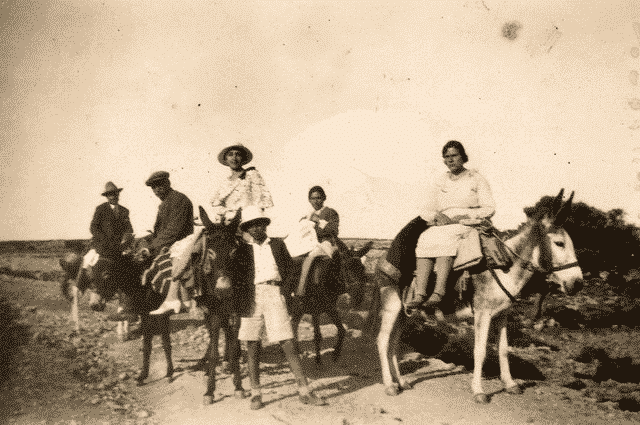Kythera has always been a crossroads of civilizations and peoples in the Mediterranean. The sea routes between the East and the West pass through here, and control of the Sea of Kythera was of great strategic importance for any kingdom or empire at the time. The various waves of invaders almost always brought their whole families with them in order to colonize the island. Those who came here mingled with the indigenous populations, and as a result Kythera is a small medley of civilizations and peoples. Today, you can still find inhabitants bearing Venetian family names or others with the name “Kasimatis”, which originates from Constantinople. Colonization took place in small numbers but was steady throughout the centuries, thus forging the “Kytherean” people.
Kythereans are an active and creative people. Poor soil and harsh life on the island forced several inhabitants to emigrate. There were three major migratory waves. The first was after the Revolution of 1821 when thousands of Greeks went to Asia Minor, where trade and culture were flourishing, and with the decline of the Ottoman Empire freedoms were being granted to the peoples. This is when a large community of Kythereans settled in Smyrna, being mostly concentrated in Kordellio and Koukloutza. This is where the first Kytherean Association was founded outside the island after the second half of the 19th century. With the “Destruction of Asia Minor” in 1922 most Kythereans left Smyrna, as did nearly the entire Greek population. There was also an important community of Kythereans in Piraeus, which up to this very day is still their largest community in Greece. Another major community was in the Egyptian city of Alexandria.
The second wave of emigrants started in the late 19th century and ended only at the start of World War II. The focus point for these new emigrants was the United States of America and Australia. The third wave – the largest – started after the war and continued up until the mid-1970s. Most emigrants go to Australia where there are some 40,000 Kythereans, plus a few thousand in the USA, while in Athens and Piraeus the community is made up of 5,000 and 7,000 individuals, respectively. Over the past few years a number of Kythereans have decided to return to Kythera, including many young people.
All these gradual changes created a rich cultural heritage, providing the Kytherean people with a specific identity and giving rise to a large variety of ways of thinking. This is a communicative, traveling people, full of memories and desires. Up to this very day their way of life consists of an ongoing exchange of ideas, stimuli, idiosyncrasies and cultures.
Kytherean culture inherited elements coming from Crete, Heptanese and Mani, as testified by the spoken Kytherean dialect. The Venetian influence is also significant. The Orthodox faith is one of the island’s main cultural elements, as evidenced by people actively taking part in religious celebrations and by the more than 300 churches on this small piece of land. On the subject of arts and songs the Kytherean people have created their own school, and they have upheld their creations to this very day.
Community activities are the norm, with dozens of associations wherever the Kythereans are located. In the age of the Internet they have set up powerful online communities to communicate and work together. The level of education is high, the economic situation of most individuals is excellent and entrepreneurship is highly developed. Generally speaking the island’s inhabitants are active in agriculture and tourism.


